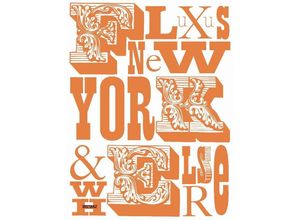New York als neues Fluxus-Zentrum Fluxus war eine der ersten internationalen und intermediären
Kunstbewegungen und hatte ihren Höhepunkt in den 1960er-Jahren. Nach dem Auftakt in Deutschland
wurde New York zum Knotenpunkt zahlreicher Aktionen der Bewegung. Eine Schlüsselfigur dabei war
George Maciunas (geb. 1931 in Kaunas Litauen gest. 1978 in Boston USA) der Theorie
Programmatik und Ästhetik der Bewegung stark beeinflusste. Dabei wurden vor allem die Praktiken
der Nicht-Kunst der Identität von Kunst und (Alltags-)Leben und des Konkretismus der
Anti-Kunst Kollektivität Partizipation des Do it yourself und des Konzeptuellen unter
Maciunas Mentorschaft zu einem unerschöpflichen Bilderuniversums verschmolzen das klassische
Genregrenzen nicht nur hinterfragt sondern auf humorvolle Weise dekonstruiert. Schon sein
beruflicher Werdegang - er war Grafiker und studierter Architekt und Kunsthistoriker - spiegelt
den interdisziplinären Charakter der Bewegung wider. Die im Gutshaus Steglitz ausgestellten
Exponate u.a. Zeitungen Filme Partituren sowie Gebrauchsgegenstände vermitteln die
vielfältigen Aktivitäten der Fluxus-Künstler*innen und des großen Ideengenerators und
unermüdlichen Organisators George Maciunas in der New Yorker Zeit. Der Ausstellungsbegleitende
Katalog schafft eine vielseitige Übersicht über die Kunst und Akteur*innen der Fluxus-Bewegung
mit einem Text von Thomas Kellein und Dorothee Richter sowie einem Vorwort von Brigitte
Hausmann. New York as a new Fluxus center Fluxus was one of the first international and
intermedial art movements which had its peak in the 1960s. Following its initial phase in
Germany New York became the nexus of its decentralized activities. Many Fluxus artists lived
there permanently or temporarily numerous events were held there and many worldwide projects
were initiated there. A Fluxus's central figure was George Maciunas (b.1931 Kaunas Lit
Lithuania * 1978 in Boston USA) who substantially shaped its theory program and aesthetic.
In the process the practices of non-art the identity of art and (everyday) life as well as
concretism anti-art collectivity participation do-it-yourself and the conceptual in
particular were merged under Maciunas' mentorship into an inexhaustible universe of images that
not only questions traditional genre boundaries but also deconstructs them in a humorous way.
The professional path he followed - he was a graphic designer and trained as an architect and
art historian - already reflects the interdisciplinary character of the movement. The exhibits
on display at the Gutshaus Steglitz including newspapers films scores and everyday objects
convey the diverse activities of the Fluxus artists and the great idea generator and tireless
organizer George Maciunas during the New York period. The catalog accompanying the exhibition
presents a multifaceted overview of the art and actors of the Fluxus movement with a text by
Thomas Kellein and Dorothee Richter and a foreword by Brigitte Hausmann.



